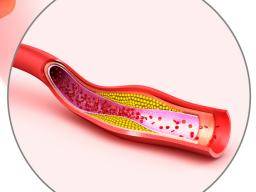life expectancy after unruptured aneurysm coiling
Aneurysm rebleeding after coiling is higher immediately after the procedure 19 within 30 days. There were more progressively occluded aneurysms in SAC group 38 of 89 aneurysms 427 than in NAC group 46 of 194 237 P 0002 but there were no significant differences in the rates of recanalization regrowth and stable resultMultivariate logistic regression identified the use of stent as the most important factor associated with progressive occlusion P 0015.
Cerebral Aneurysm Follow Up How Standards Have Changed And Why Endovascular Today
A brain aneurysm repair can change your life in a number of ways.

. The risk of aneurysm rupture is about 1 perecent per year but may be higher or lower depending on the size and location of the aneurysm. You may wish to see our fact sheet Craniotomy for further information Coiling involves approaching the aneurysm from inside the blood vessel so that. Brain aneurysms can be treated using surgery if they have burst ruptured or theres a risk that they will burst.
Is an out pouching of one of the vessels inside of the brain. In our study surgical clipping resulted in an 08 rate of mortality and 34 permanent morbidity. Vindlacheruvu et al.
Recovery Continues At Home. We aimed to compare the quality of life and symptoms of anxiety or depression after endovascular coiling or open surgery clipping of unruptured intracranial aneurysms in patients with no prior subarachnoid haemorrhage. The surgery can reverse or prevent progression of neurological deficits caused by a brain cerebral aneurysm.
Brain aneurysm surgery can be done for ruptured or unruptured aneurysms. In the 1990s coiling was introduced as a way of treating ruptured and unruptured brain aneurysms without the need for a craniotomy an operation that opens the skull to expose the brain. People with a family history of brain aneurysms should have a screening test CT or MR angiogram.
Coiling does not require opening the skull. A ruptured aneurysm can cause serious health problems such as hemorrhagic stroke brain damage coma and even death. Full recovery takes 5 to 7 days.
The coils fill the aneurysm and stop blood from flowing into it. A brain aneurysm ruptures every 18 minutes. 41k views Answered 2.
Full recovery typically takes around one week with a gradual return to normal activities during that time. Full recovery may take several weeks. For smaller brain aneurysms or for patients with reduced life expectancy in the absence of other risk factors the risks of treatment may outweigh the benefits of treatment.
The catheter contains tiny titanium coils. Between 30 days and 1 year the rebleeding rate is 06 3. When the brain aneurysm ruptures it leads to a subarachnoid hemorrhage which is a very dangerous condition and which decreases the brain aneurysm survival rate.
An estimated 65 million people in the United States have an unruptured brain aneurysm or 1 in 50 people. Performed a life expectancy analysis of patients with unruptured aneurysms with and without repair based on prospective data from ISUIA to identify circumstances under which aneurysm repair would be beneficial. Emergency Medicine 12 years experience.
They found that in patients with aneurysms 7 mm or larger or with aneurysms of the posterior circulation life years are gained. For all other unruptured aneurysms the number of. Aneurysm rebleeding after coiling is higher immediately after the procedure 19 within 30 days.
The biggest concern is if this were to rupture. This is because surgery has its own risk of potentially serious complications such as brain damage or stroke. Some cerebral aneurysms particularly those that are very small do not bleed or cause other problems.
About 30000 people in the United States suffer a brain aneurysm rupture each year. During this time staff will continue monitoring your vital signs and responses to check for complications from the ruptured aneurysm or from the procedure itself. Studies on natural history of unruptured intracranial aneurysms suggest 10 year cumulative bleeding-related mortality and severe morbidity of no less than 75.
Aneurysm coiling is far less invasive than surgery that involves opening the skull so your recovery time is likely to be much shorter with less risk of serious complications caused by the procedure. Therefore the patient should be properly informed of the rates of serious adverse events and the rupture risk as part of the decision making to undergo intervention. There are few trials studying the quality of life after treatment of unruptured intracranial aneurysms.
These types of aneurysms are usually detected during imaging tests for other medical conditions. The chance is 19 within 30 days of surgery. After having an operation to relieve the effects of a ruptured brain aneurysm long term care.
Between 30 days and 1 year the rebleeding rate is 06 3. Overall 30-day mortality in-hospital complications and 30-day readmissions decreased generally reaching their lowest levels in 2008 to 2010 16 250 and 145 for clipping and 15 138 and 110 for coiling respectively. After a ruptured aneurysm recovery from a coiling procedure typically involves a hospital stay of 14 to 21 days or longer depending on issues caused by the rupture and any other factors that might affect your.
What are the results. Frequently asked questions How long does a brain aneurysm coiling last. Aneurysm recurrence after coiling occurs in 20 of patients 3.
Unruptured aneurysms may not cause symptoms and are typically detected during routine testing. For coiling expect to be in the hospital 1 to 2 days. This suggests that surgical clipping ha.
This in turn could cause a person to. Therefore clipped aneurysms may have an advantage for improved life expectancy for this group of patients. The annual rate of rupture is approximately 8 10 per 100000 people.
In a study using life expectancy analysis based on International Study of Unruptured Intracranial Aneurysms data to determine the circumstances under which treatment of unruptured aneurysms might be beneficial 15 life years are lost at all ages by treating incidental anterior circulation aneurysms smaller than 7 mm. For clipping expect to be in the hospital for 4 to 6 days. Preventative surgery is usually only recommended if theres a high risk of a rupture.
The long-term success of endovascular coiling to treat aneurysms is about 80 to 85. About 15 percent of these people never make it alive to the hospital. For smaller brain aneurysms or for patients with reduced life expectancy in the absence of other risk factors the risks of treatment may outweigh the benefits of treatment.
Those that do not die generally have some permanent brain damage or residual deficits at a rate of about 66 percent. Chances of an aneurysm to re-bleed after coiling are higher immediately after the procedure.

Clipping Joe Niekro Foundation

Unruptured Brain Aneurysms Johns Hopkins Medicine

Unruptured Aneurysm Recovery Time After A Coiling Procedure

After Five Years Coiled Aneurysm Has A Better Death Rate Than Clipped But Bleeding Risk Is Slightly Higher

Aneurysm Surgery Comparison With Coiling And Future Pdf Aneurysm Surgery Comparison With Coiling And Future Introduc On Course Hero

Management Of Unruptured Intracranial Aneurysms Abstract Europe Pmc

Endovascular Coiling Johns Hopkins Medicine

Aneurysm Brain Read About Causes Surgery And Symptoms Brain Aneurysm Aneurysm Cerebral Aneurysm
Why Brain Aneurysms Need Watching Not Worrying Blog Loyola Medicine

Risk Analysis Of Treatment Of Unruptured Aneurysms Journal Of Neurology Neurosurgery Psychiatry

Endovascular Coiling For Brain Aneurysms Treatment Johns Hopkins Aneurysm Center

Loading Brain Aneurysm Aneurysm Brain Aneurysm Awareness

The Sizes Of Unruptured Aneurysms Treated By Coil Embolization Or Neck Download Scientific Diagram
A Coiling Of An Unruptured Right Middle Cerebral Artery Mca Download Scientific Diagram

A A Woman 47 Year Of Age Presented With Unruptured Aneurysm In The Download Scientific Diagram

After Five Years Coiled Aneurysm Has A Better Death Rate Than Clipped But Bleeding Risk Is Slightly Higher

